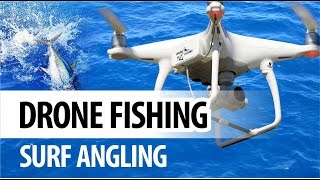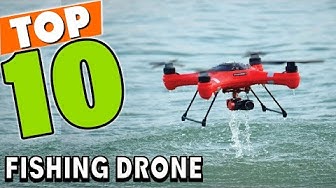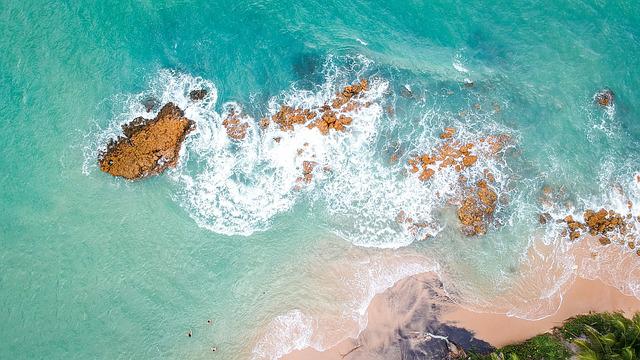
A drone can be used to view the water around your property if you're a keen fisherman living in Australia. A drone can have many features such as an angle adjustable camera and GPS positioning system. You can also purchase fishing lines, which are stable and safe. The SKY RIGGER drone is one such example.
SKY RIGGER, a drone fishing line, is available
The SKY RIGGER is a flexible fishing line system for drones that allows you to fish from the air with minimal effort. The system features two rotating leg clamps that can attach to various drone models. The release mechanism is designed with a bayonet-style connection and a cam-lock arm to open the line clamps quickly. Sky RIGGER, unlike other drones requires no batteries and can handle all fishing techniques safely.
For when a fish strikes your fly, the SKY RIGGER features an automatic release mechanism. You can also manually release the line using your hand or rod. This feature is standard on all SKY RIGGER models. It is highly recommended that you buy a Phantom 3 before buying the new SKY RIGGER. Here are some pros and cons to the new line system.
It has a mechanical payload release
One of the most important features of a good drone is its mechanical payload release. Many of them are designed to allow the angler to release the fishing line with ease. Some models lack a release mechanism. Instead, the user must "yank" the fishing line to release the drone from the line. This can be awkward, especially for people who don't like using their hands to release line.

Another important feature is its payload release mechanism. When a fish strikes, the payload must be able release the line from the drone. Practice catch and release fishing before you attempt this method. This is because the fish can't be simply pulled to shore and released into the sea. Several people have reported good results with the DJI Phantom drone. But, it is still not as advanced as other fishing drones.
It comes with a GPS location system
Rippton is an Australian-Dutch joint venture that specializes technology-oriented products for fishing. Its goal is improve anglers' success by creating products that enhance the fishing experience. Rippton's Mobula drone has a GPS positioning system as well as a remote release. The Mobula drone can store bait at the top, protect against kite clippings, and is eco-friendly.
It weighs only 3 pounds and can fly for as long as 18 minutes. It has a high tech GPS system that can be controlled from as far as 2,000 meters away. It has an operating range of 1000m (or half a mile) and intelligent flight modes. The point of interest feature allows it to take high-quality photos of its surroundings. Its high-resolution camera allows you to get great views of fish.
It comes with a failsafe feature
Aerokontiki's drone fisherman has a failsafe feature. It monitors the battery level, and releases the line when it is needed. It will return to dry ground if it experiences a battery failure and continue its mission. It can be operated anywhere with its industrial-grade flight control system. This drone is also waterproof, so you can use it even in the most difficult water spots.

FAQ
Can I fly my drone indoors without a license?
Yes, it is possible to fly your drone indoors. It is important to make sure there are no hazards or obstacles in your home. For example, you should avoid flying near windows, doors, heating vents, air conditioning units, electrical outlets, water pipes, and fireplaces.
Is it safe for a driver to fly a drone?
Drone flying while driving can be dangerous as you may collide with another vehicle or object. You also risk hitting pedestrians or other animals. In addition, you could damage your car by hitting power lines, trees, or buildings.
Can my drone be flown around my neighbourhood?
Yes! These are also known as UAVs (unmanned aerial vehicle). There are many options for drones, from small quadcopters to larger fixed-wing aircraft. New rules have been issued by the FAA regarding commercial use of UAVs. This means that you can legally fly them for business purposes. However, be aware that flying a UAV near airports may cause interference with air traffic control systems, and you must obtain permission from local authorities before operating one.
How can I keep drones from my home?
Drones are becoming more popular for home security and surveillance. If you want to avoid drone attacks, you should install motion sensors around your property and use them to detect any unauthorized flying objects.
What is the law on drones flying over private property?
New rules have been issued by the FAA for commercial drone flying. These rules apply to UAVs with a weight less than 55lbs and that fly at a height of below 400 feet from the ground. Commercial operators will need to register with FAA and get a license from agency. When operating in restricted areas or near airports, they will need to obtain permission from the local authorities.
Where can a drone be purchased?
You can find many different types of drones online. Some prefer to purchase their drones via Amazon, eBay, and Walmart. Others prefer to purchase their drones directly at the manufacturer.
How high can you fly a drone without a license?
The FAA does not limit the height of a drone. They do require that you register your unmanned airplane system (UAS), which includes registration number, model number, weight, size and manufacturer's names, as well as other information.
Statistics
- Research and Markets predict a growth rate of 51.1% over the next five years. (thedroneu.com)
- According to industry research from ZipRecruiter , there are 10 cities where the typical salary for a Drone Pilot job is above the national average. (dronesgator.com)
- According to Indeed, a drone pilot gets paid $25.73 per hour on average in the US. (dronesgator.com)
External Links
How To
How to Fly Drones at a Beginning Level
A drone refers to a remote-controlled aircraft designed for aerial photography, surveillance and scientific research. Drones have been in use since World War II. DJI's Phantom series of quadcopters was the first to be commercially used. Many types of drones have been made available since then, from beginner-friendly models such as the Parrot AR Drone 2.0, to high-end multi-rotor craft such as the DJI Mavic Pro.
There are several ways to fly a drone, including;
-
Remote control: This uses a remote control device that attaches to your hand and allows you control the drone along its flight path. There are two types of controllers available: joysticks and on/off switches.
-
Manual Control - This method uses a smartphone app to remotely control the drone using GPS coordinates. The app will give you instructions.
-
Autonomous flight - The drone takes over the piloting duties. It is basically flying autonomously and without human intervention. A drone must have a builtin camera and sensors capable to capture images and other data.
-
Triggered Flying - This method works in the same way as manual control. However, the pilot has to manually set up a route for the drone and it follows that route until reaching the endpoint. After the program is complete, the drone automatically returns to the ground.
-
Landing Gear – Some drones are equipped with landing gear, which allows them to safely land if they lose power during flight.
-
Goggles-Some pilots use goggles to protect their eyes from debris during operations.
-
Camera - Some drones can be equipped with cameras which enable you to capture photos from the sky.
-
Obstacles: Some drones are equipped with obstacle avoidance systems to prevent them from hitting obstacles.
-
Speed - Some drones can reach speeds of over 40 mph.
-
Battery Life: Most drones have a battery life of between 20 and 30 minutes depending on how many power sources you use.
-
Range - Some drones can travel upto 30 miles depending on their models.
-
Power source: Some drones will require an external power source while others can be powered by internal batteries.
-
Weight – Some drones are less than one pound, while other models can be up to four pounds.
-
Size - Drones come in many sizes, from small gadgets that fit in one's hands to large craft that weigh more than 50 lbs.
-
Price – All drones fall into a price category. These range from expensive models that cost thousands to affordable options that start at 100 dollars.